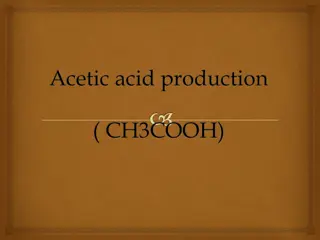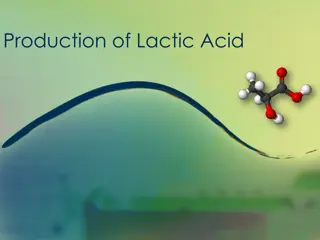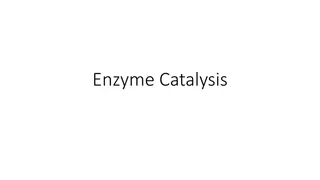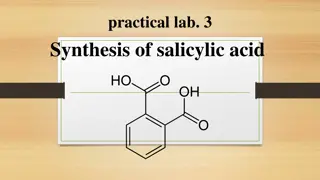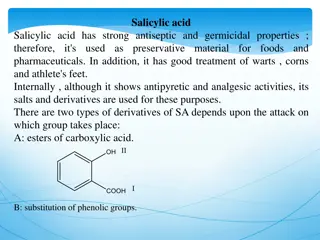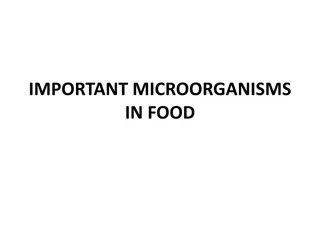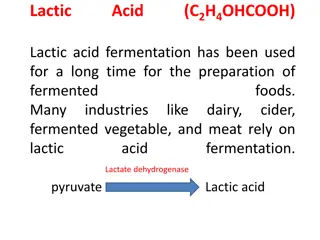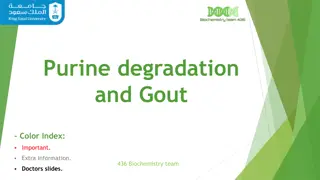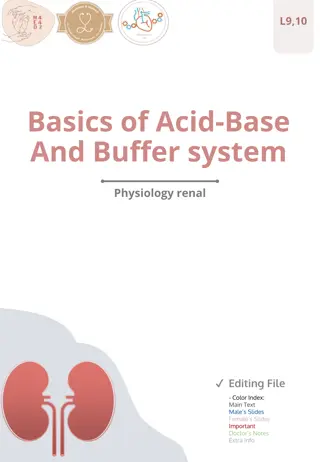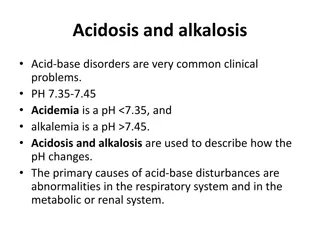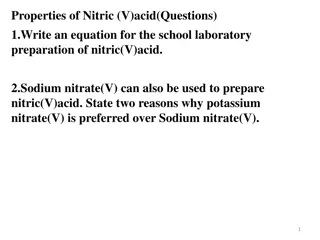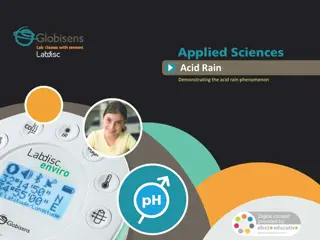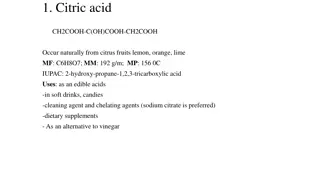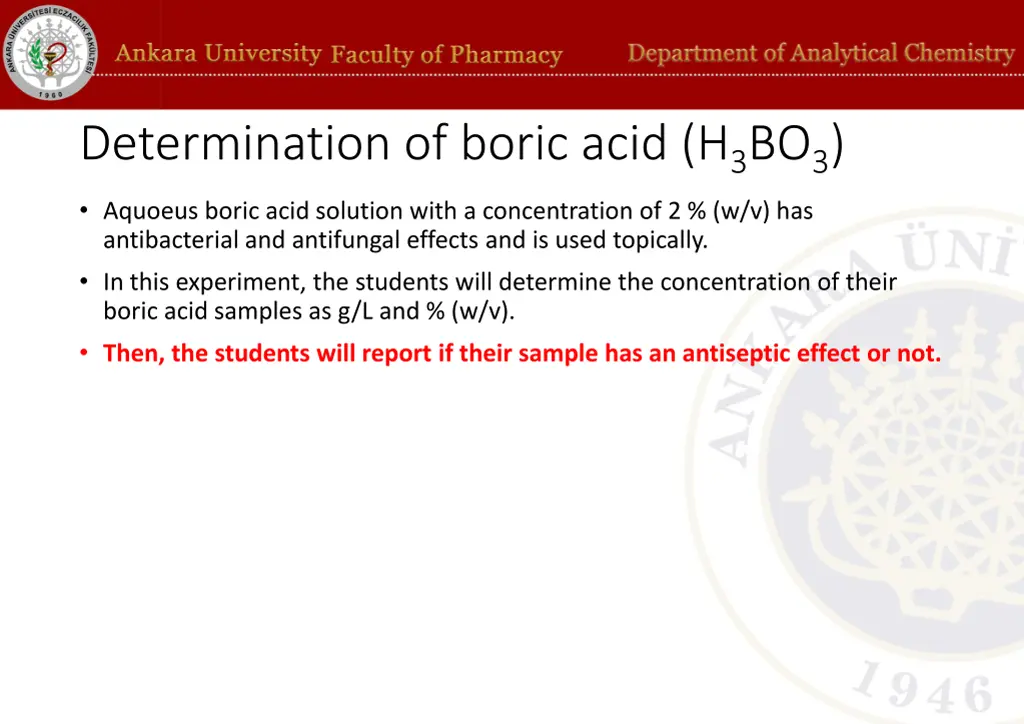
Determination of Boric Acid Concentration Experiment
Learn how to determine the concentration of boric acid samples using a complex formation method with glycerol and titration with NaOH. Understand the principles, experimental procedures, and calculations involved in this scientific experiment aimed at assessing the antibacterial and antifungal effects of boric acid solutions.
Download Presentation

Please find below an Image/Link to download the presentation.
The content on the website is provided AS IS for your information and personal use only. It may not be sold, licensed, or shared on other websites without obtaining consent from the author. If you encounter any issues during the download, it is possible that the publisher has removed the file from their server.
You are allowed to download the files provided on this website for personal or commercial use, subject to the condition that they are used lawfully. All files are the property of their respective owners.
The content on the website is provided AS IS for your information and personal use only. It may not be sold, licensed, or shared on other websites without obtaining consent from the author.
E N D
Presentation Transcript
Determination of boric acid (H3BO3) Aquoeus boric acid solution with a concentration of 2 % (w/v) has antibacterial and antifungal effects and is used topically. In this experiment, the students will determine the concentration of their boric acid samples as g/L and % (w/v). Then, the students will report if their sample has an antiseptic effect or not.
Principle: Since boric acid is a very weak acid(Ka=5x10-10) it cannot be titrated directly with strong alkali solutions. The complex formed by boric acid with a compound that have several alcohol groups (glycerol, mannitol, sorbitol e.g.) behaves like a weak acid. That is why, boric acid is titrated with NaOH after adding glycerol to the erlenmayer. The proton that is occurred after the formation of complex can be titrated with standardized NaOH.
Experimental Procedure: Each student will receive 20 mL of boric acid solution with an unknown concentration in a 100 mL volumetric flask. Complete the sample in the flask to 100 mL with distilled water. Take a portion of it into an erlenmeyer flask with your single volume pipette. Add 10 mL glycerol solution (1:1 diluted and neutralized) to the erlenmeyer flask. (The glycerol solution prepared by the lab personnel will be ready to use.) Add 2 drops of phenolphthalein to the erlenmeyer flask and titrate with standardized NaOH solution until the pink color is observed.
Calculation: Boric acid concentration of the original sample will be calculated as g/L and w/v %. (MWH3BO3= 61.82 g/mol) First, the moles of NaOHconsumed during titration is calculated: nNaOH =MNaOH VNaOH According to reaction equation: If 1 mol NaOH reacts with 1 mol H3BO3 nNaOHmol NaOH reacts with x mol H3BO3 From this ratio, the moles of H3BO3in the diluted sample (? = nH3BO3) is calculated. Then the molarity of the diluted sample is calculated from x. MH3BO3= ? VH3BO3 The molarity of the original sample (M??????)is calculated by multiplying the molarity of the diluted sample by the dilution factor: M??????= MH3BO3 DF The molarity is multiplied by the molecular weight to convert the concentration of the original sample to g/L: C g L = M?????? 61.82 Concentration of the original sample is calculated as w/v %. (w/v) % = 100 ?? ? 1000 ?? ? (w/v) % = ?(?/?) ?? ?(?/?) = Reference: Analitik Kimya Pratikleri Kantitatif Analiz (Ed. Feyyaz ONUR), 2014
Report Task Name-Surname Number: Sample Number: Experiment Name: Name of standardized solution Molarity of standardized solution: Volume of standardized solution: Indicator: Experimental Procedures: Result: Result should be written the back of page!!!! The report should be written with blue pen!!!! Date








